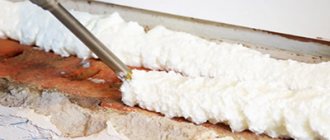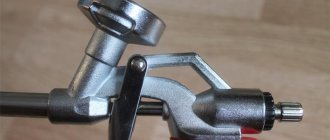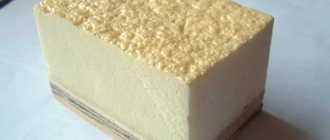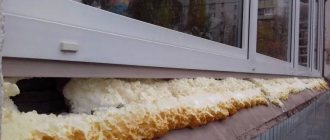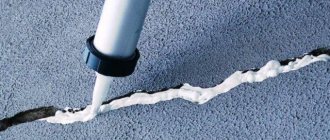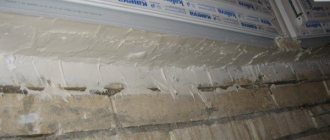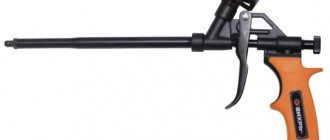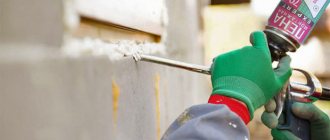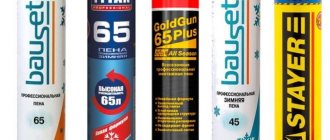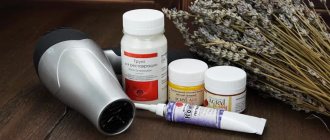But treating structures with sealant can be difficult in the winter due to weather conditions.
However, foaming window seams is especially important in cold weather, when good thermal insulation is required.
For such cases, there is a special winter version of the substance. To choose the right product, you first need to familiarize yourself with the features of frost-resistant polyurethane foam.
What does the concept mean?
Polyurethane foam for windows is a material that is used in construction or repair work for sealing, soundproofing and thermal insulation of joints.
Note. Its winter version allows you to use the product even in subzero temperatures.
Thus, installation of structures can be carried out almost at any time of the year, which eliminates the need for builders to stop work.
If you try to use the summer version in frosty conditions, there is a high risk of specific problems.:
- The product cannot reach the required consistency.
- The required hermetic base is not formed.
- The foamy mass after application crumbles when it hardens.
Such consequences can be avoided by winter sealants, the chemical composition of which develops resistance to low temperatures. Also, some types of funds can be used in the summer.
Features of the composition
Any polyurethane foam contains a liquid prepolymer, which is displaced from the container by a mixture of gases , after which it foams under the influence of moisture, expands and gradually hardens.
As a result, a relatively strong material is formed - polyurethane foam.
The difference between winter sealant and summer sealant mainly lies in the chemical composition of the propellant - a gas that displaces the filling mixture. This allows you to achieve more productivity from your products.
How to add sub-zero temperatures to the weekday?
Depending on the temperature regime, it will take more than an hour to harden the pine, but also its productivity. If you freeze summer stamps in the cold season, the process of setting will significantly drag on. In addition, at sub-zero temperatures, the amount of foam coming out of the balloon is much less than at positive temperatures.
The humidity of the surface plays an important role - the lower it is, the more time it will take to harden. In order for the foam for insulating windows to perform its functions for the winter, special components are delivered to the warehouse. As a rule, there are no problems when working with it in the cold season.
Varieties
There are several classifications of polyurethane foam based on a number of parameters. So, according to the method of application, the product is :
- Professional. To use, you need a special dosing gun, with which the mixture is supplied from a cylinder;
- Bytovym. No additional tools are required for use. The product is applied using the existing adapter tube.
The product is also classified by flammability class:
- Fireproof, B1. Typically used to treat fire rated doorways/windows and to seal joints near a fire source. Non-flammability is achieved due to the presence of fire retardants in the composition.
- Self-extinguishing, B2. Upon direct contact with fire, it melts and drips. If there is no open flame, it goes out immediately.
- Flammable, B3. It is recommended to use only in areas where the occurrence of fire is minimized.
Note. By the appearance of the cylinder, you can determine what type of sealant it is: non-flammable options have a pink tint, flammable ones are white or yellow.
Also, winter polyurethane foam can be divided into types according to composition :
One-component .
In manufacturing, polyurethane is used as the main component. The key feature of this type is secondary expansion.Therefore, when sealing seams, the product must be applied only to a third of the space, otherwise there is a risk of surface deformation.
It is considered the simplest and most convenient to use.
- Two-component .
One of the key disadvantages of the one-component option is the relatively short shelf life - up to 12 months. The reason is that the two components that cause the foam to harden are contained in one container. The two-component foam container is separated at the base by a special seal, which prevents the interaction of these substances. The limiter is removed immediately before use.
In addition to a longer shelf life, two-component foam hardens faster, has no secondary expansion and has higher quality characteristics.
Examples of manufacturers
Among the world's manufacturers we can highlight:
- Soudal (Belgium). It is considered a leader in the production of sealants. On the market for over 50 years.
- Penosil (Estonia). Despite the relatively young age of the company (30 years), it already produces more than 10% of the foam on the European markets.
- Dr. Schenk (Germany). The company has existed for more than 80 years and is constantly working on quality. As an indicator of results, the company became the owner of the ISO 9001:2008 certificate.
It is also worth noting the Russian manufacturer Profflex. An enterprise from Tula that produces exclusively polyurethane foam. The quality corresponds to the products of world leaders.
Additional nuances in choosing a note
To ensure that the strength of the seams is at its best, it is necessary not only to follow the recommendations, but also to choose the right material. The consistency must be elastic, and after hardening it must not crumble.
If the foam warehouse sticks strongly to the surface, does not expand and seals tightly, creating a thin sticky ball - this is a sign of a low-acid material. In this situation, it is better to buy foam from a different plant, and also ensure the durability of the seams, as well as their ability to save heat in the area.
The average price for clear non-flammable foam for windows and doors in Kiev starts at 95 -150 hryvnia.
How to choose?
When choosing frost-resistant sealant for window openings, you need to consider the following rules :
Check the cylinder for underfilling.
This phenomenon is not uncommon, and it has a negative impact on the properties of the product. Due to underfilling, the foam does not come out of the container completely due to low pressure.- Check for the presence of a secondary extension.
The substance must be applied taking into account this parameter. If you completely fill the cracks in the window with the product, secondary expansion may damage the structure. - Consider the production date. It is better to take foam that is less than six months old. The older the product, the longer it takes to harden.
- It is worth choosing the professional option. It is more reliable and has lower shrinkage, which prevents damage to the integrity of the seams.
Important. It is worth giving preference to products from trusted or reputable manufacturers.
What is a winter installation and what is its difference from a summer installation?
Summer foam for plastic windows and doors cures completely at temperatures from + 5 ° to + 35 ° C. With such characteristics, the material has high productivity, fills seams well and seals smoothly. If the temperature ranges from -10 ° to + 35 ° C, it is possible to freeze the all-season foam, which ranges from +30 to -10 ° C. At temperatures up to -18 ° C, it is necessary to freeze the winter foam. Vaughn is low to important authorities:
- don’t crash in the cold;
- develops the necessary hardness in a short hour;
- clearly fills the seams and expands to the required size;
- It’s good to get out of the balloon.
In addition to frost-resistant, summer brands, pins do not expand at negative temperatures, so they will not stagnate in the cold season.
Respect! Window insulation with mounting foam, designed for winterization, is possible at any temperature, so it preserves the technical characteristics of the windings in highly sintered areas.
You can find out everything about the installation pin on our website; if you have lost your food, call our consultant.
How to foam: nuances of technology and rules
When carrying out work on sealing seams, a number of features must be taken into account :
- The container with sealant must be kept in a warm room for at least 10 hours.
- The surface to be treated must be cleaned of dirt, snow and dust.
- When sealing, the container must be held upside down.
- It is important not to forget about secondary expansion.
- Before use, it is recommended to shake the container vigorously for 20 seconds.
Note. If these features are ignored, there is a high risk of reducing the quality of the insulating seam.
Difficulties and errors
There are a large number of low-quality products on the polyurethane foam market.
If you do not follow the rules for choosing a product, there is a high probability of running into a bad product , the use of which may cause damage to the integrity of the window structure.
It is also important to follow the rules for foaming windows, paying special attention to secondary expansion. It must be remembered that this principle can lead to structural failure.
Terms of use
Builders follow the work technology to ensure the correct functioning of the valves of the can and uniform polymerization inside.
The exhaust valve sticks due to the following reasons:
- heterogeneous heating of the contents inside, when part of the mass remains thickened;
- rapid and too strong heating of the aerosol container, while the accelerated transformation of the prepolymer causes the appearance of clots;
- the cylinder is stored upside down - the mass thickened in the cold clogs the valve.
In the latter case, the cylinder is placed with the valve up, and a little gas is expelled by pressing.
It is impossible to use an unheated cylinder - this will cause excessive consumption of foam and reduce the quality of the joint filling. It is optimal to keep the container at a temperature of +15° - +20°C for 24 hours.
Working at sub-zero temperatures
The working surfaces or seam cavity are cleaned from the adhesion of ice, snow, and dust. If the gap is wide, strips of foam plastic, fiberboard, cardboard, and other materials are placed in it so that the foam does not fall through. The surface is moistened with a brush or spray.
Procedure:
- shake the aerosol container for 30 seconds;
- the mixture is placed into the seam so that it occupies 1/3 or 1/2 of the space (options for a gun and a cylinder with a tube);
- After application, the foam is moistened to prevent the formation of frost or ice.
The frozen mass is protected from ultraviolet radiation with a finishing material, for example, plaster, putty, sealant, paint. You can cut off the excess only after 1 - 1.5 days, after complete drying.
How long does it take to dry
The initial setting time is 20-40 minutes.
The first crust on the surface of the mixture forms after 20-40 minutes , and the time until complete hardening can take up to a day or even more.
The polymerization period depends on the following indicators:
- frosty air temperatures;
- atmospheric humidity;
- composition of the material.
If the insulator is oversaturated with filler, unbound gas, a large number of open links inside is obtained. Expansion occurs quickly, but stabilization of shape is delayed. Insufficiency of active surface components leads to the combination of cells into large cavities.
The manufacturer coordinates the polymerization and expansion processes by introducing different volumes of blowing agent. The component opens closed bubbles and large cavities so that gas escapes and solidification occurs evenly.
Storing polyurethane foam
The foam inside the aerosol container has a shelf life limit. Chemical interactions begin, reactions occur slowly, but do not stop.
Rules for maintaining foam cylinders:
- It is better to organize the temperature in the storage area at +5°C;
- long-term storage at sub-zero temperatures reduces consumer characteristics;
- two-component formulations are stored longer, since the reagents are located in different sections of the cylinder or containers (depending on the type of release).
Valera
The voice of the construction guru
Ask a Question
When working with a gun, the cylinder can be left on the tool. This way, the working pressure will be constantly maintained in the aerosol, and the polymerization process will slow down. If after such storage there is no mixture coming out of the tube, you need to clean the valve.
Average prices in the Russian Federation
Among the most popular options for polyurethane foam are the following :
- Instant installation – from 250 to 300 rubles.
- Makroflex - from 325 rubles.
- Soudal - from 295 rubles.
- Penosil - from 285 to 315 rubles.
- Titan - from 345 rubles.
Note. It must be taken into account that the cost is determined not only by regional characteristics, but also by markups of individual stores.
When can you cut off excess foam?
The polymerization time of polyurethane foam is affected by the temperature of the environment, the cylinder itself and the size of the cavity. On average, professional foam hardens in a cavity 30 mm wide in 20–30 minutes, while household foam hardens somewhat more slowly—in 40–60 minutes. The expansion process is completed in a day, and then you can begin to remove the solid mass.
Vertical gaps are filled with polyurethane foam, moving from bottom to top. Photo: ShutterStock/Fotodom.ru
The hardened foam is carefully cut off with a sharp knife. Photo: ShutterStock/Fotodom.ru
- Construction Materials
How and with what to wash polyurethane foam from hands and clothes: a complete review of means and methods
Foam cleaners
Winter professional mounting foams: Makroflex Premium Mega 70 (Henkel) (870 ml pack - 390 RUR). Photo: Henkel
The polyurethane foam remaining after mechanical cleaning of the gun, cylinder (valve and the outside of the cylinder itself), clothing and other surfaces can be easily removed using a special aerosol cleaner. There are two types of cleaners available:
- for soft foam;
- for hardened foam.
They all contain strong solvents. Therefore, before use, it is advisable to test the effect of the aerosol on a hidden area of the surface being cleaned.
Flammability classes
The flammability class is one of the main technical parameters that is assigned to each building material. Therefore, polyurethane foam is no exception. Let's look at the notation and explanation:
- B1 - is fireproof;
- B2-considered flammable but self-extinguishing;
- B3—flammable.
The best option for all cases is a composition with a fire-resistant class. This can even be used when installing heating equipment, when contact with hot surfaces is inevitable.
Flammability class of one-component polyurethane foam Source onlinetrade.ru
Scope of application
Polyurethane foam, intended for work in the cold season, has increased adhesion. This ensures quick adhesion to the surface, excellent fixation after just a few hours.
For external and internal installation, the material is used for the following purposes:
- fixing parts of large window frames or door jambs;
- fastening slabs when insulating walls;
- sealing gaps between seams and joints on the outside of the building;
- closing seams in a wooden steam room instead of tow;
- thermal insulation of heating or cooling systems in a home or manufacturing plant.
Winter foam is indispensable for sealing holes in the wall when removing a pipe from a steam room or air conditioning hose. It is not afraid of temperature differences between indoors and outdoors, and it insulates extraneous sounds well.
Often, the need for such material arises in late autumn and winter, when after heavy rains the moisture accumulated in concrete floors expands, wide cracks and faults form. This allows for urgent repairs and protects the home from heat loss.
Does foam need to be protected from sunlight?
Tytan Professional ICE 65 (Selena) (870 ml pack - 340 RUR). Photo: Selena
Polyurethane foams are very sensitive to UV rays. The hardened mass darkens and crumbles under the influence of sunlight. The foam must be protected from light by plaster, panels, etc. In addition, the frozen mass does not tolerate temperatures above 110 ° C, exposure to alkalis, acids and compounds used to remove foam residues.
